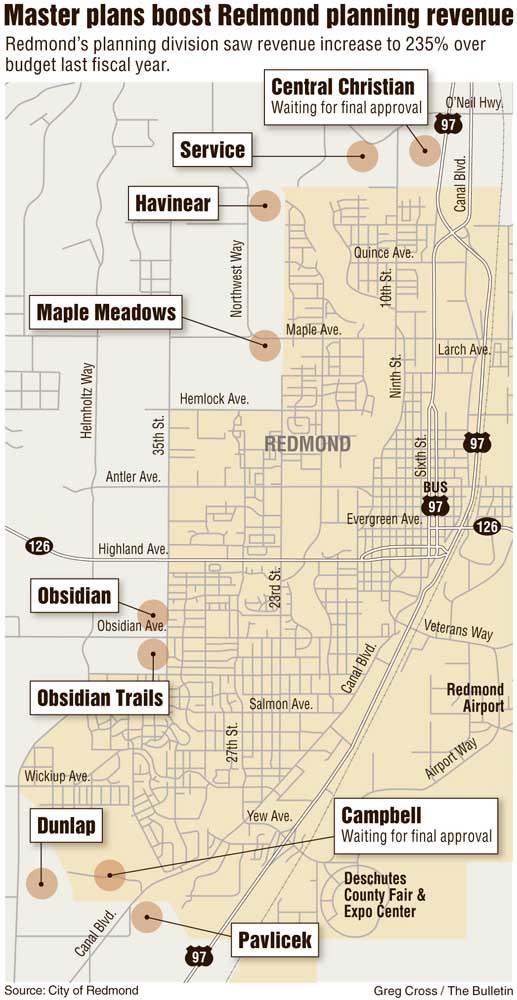Redmond’s growth brings unexpected revenue
Published 12:00 am Thursday, September 8, 2016

- Redmond’s growth brings unexpected revenue
REDMOND — The city’s surge of residential growth has translated to unexpected planning permit revenue for the planning division, which finished out the last fiscal year with 235 percent more revenue than was budgeted.
The planning division, which oversees the permitting and approval of housing development master plans, reported the revenue burst at a recent Redmond City Council meeting. According to the year-end financial report, which isn’t final, the division finished out fiscal year 2015-16 with planning permit revenue clocking in at $529,000 — more than double what had been budgeted at the beginning of the year.
“(Planning permit revenue) was way substantially higher than we anticipated,” said Jason Neff, one of Redmond’s directors of central services, noting that planning division expenses came in under budget.
Neff said the revenue came from all the master plans the planning division approved last fiscal year, significantly more than what the city typically sees.
According to the planning division’s records, the city approved seven development master plans and began the process of approving two others during the last fiscal year. The number of housing units they would create was not available Wednesday. Planning Manager Deborah McMahon said the fees can cost developers more than $40,000 each.
“I don’t think (the revenue) is so extraordinary based on the amount of activity that came in,” McMahon said. “Those master plans are large projects and complicated, and there were a lot.”
Neff said the city has typically approved a couple of master plans every year, but last year was a surprise.
“We don’t plan on that many happening,” he said, adding that the city doesn’t expect as many master plans to be approved in this fiscal year’s budget.
“We ratcheted it down quite a bit to a more normal level. We basically budget very conservatively, and that means budgeting for only a couple coming through.”
The money the Community Development Department receives from the planning division goes back into the department’s budget, Neff said. A third full-time employee was hired last year to keep up with the demand for service.
“It’s good to build a fund balance; that way when the recession comes you can rely on that to maintain service,” he said.
McMahon said the time staff puts into going over master plans and other related documents can take up to six months to complete. Each master plan has to be approved by Redmond’s Planning Commission as well as the City Council, but before that it’s up to the city’s planning division to make sure the plans comply with city standards.
“It’s a process to examine all elements,” she said. “We examine the proposal from the infrastructure on up with the compliance to the city’s area plan as well as the neighborhood planning principles to make sure we’re getting the communities we anticipate. A big thing is making sure we have a range of housing types and that people have choices.”
For example, McMahon said one subdivision approved last fiscal year in March — a neighborhood being developed by HT Development Properties and Affiliates north of Obsidian Avenue — is geared toward higher-end homes and apartments. The council discussion surrounding the approval of that neighborhood stretched longer than two hours because of a negotiation over the width of foot paths.
A Hayden Homes subdivision called Obsidian Trails the council approved in February, also near Obsidian Avenue, has a full range of housing types, McMahon said.
“Each neighborhood is a little bit different,” she said. “Those two are an example of two different neighborhoods being developed with a good range of amenities.”
— Reporter: 541-617-7829,
awest@bendbulletin.com






